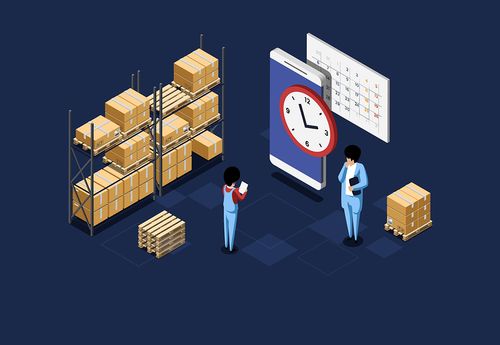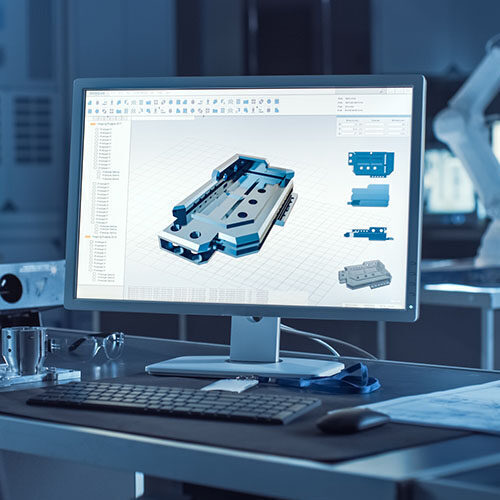
Why Is It Hard for Custom Manufacturers To Deliver Jobs on Time?
Does any of this sound familiar: Customers change their minds, suppliers aren’t always reliable, and machines and tools break? There are many reasons that custom manufacturing shops can fall behind, causing orders to be late. Add to that the fact that custom shops don’t have the luxury of making the same parts and products over and over again, meaning it’s already harder for custom manufacturers to deliver jobs on time compared to repetitive manufacturers.
Even though the mix of work that flows through a custom shop can vary greatly from week to week, there are things custom manufacturers can do to improve their delivery rates and get more jobs out the door — improving productivity and customer satisfaction.
5 Ways To Help Your Shop Deliver Jobs on Time
1. Work smarter, not harder.
It may sound counterintuitive, but stop focusing so much on efficiency.
Many shops want to ensure they are operating at maximum efficiency — meaning they keep all their equipment and people busy, so they don’t waste any capacity. These shops will be set up to allow all jobs, including all WIP, to be accessible to be worked on in order to keep everyone busy. But the end result is that you actually complete fewer jobs on time.
The truth is that your ability to deliver on schedule is directly impacted by how much WIP you have in your shop. More WIP equals longer lead times making it harder to estimate production timelines and confirm orders in a timely manner.
The solution to this is to use a smart scheduling system that creates an easy-to-follow, accurate, and reliable schedule that prioritizes jobs in your shop so that you deliver more jobs on time, not fewer.
2. Have the right level of stock on hand.
To keep jobs on schedule you must have good procurement and inventory management systems and practices in place to ensure you have the right quantity of stock on hand at all times. You need to consider several crucial factors when determining appropriate inventory levels, including daily production requirements, supplier lead times, production efficiency, and supplier efficiency.
All of this can be pretty complicated for custom manufacturers, so the best thing to do is use an ERP for inventory management. An ERP is in sync with the rest of your business and will allow you to set up good inventory management processes in your shop. Not only will you get precise inventory counts in real-time, letting you accurately assign parts to jobs and always know what you have available, but you can also take advantage of advanced features like automated re-order functions that will alert you when stock is low and automatically place an order for those parts for you.
The right amount of stock on hand equals fewer stock emergencies — and more jobs out the door on time.
3. Find your bottlenecks.
The cold hard truth is that bottlenecks exist in every custom manufacturing shop.
A bottleneck is a production procedure, work area, or piece of equipment that limits a plant’s total performance — and unfortunately, the bottlenecks in a plant determine its capacity. It is essential to have a smart production manager that can locate bottlenecks and allocate the right resources to fix them.
You will never completely eliminate bottlenecks in your shop, as every time one bottleneck is eliminated, another one will pop up somewhere else. But learning how to quickly identify and fix them will lead to fewer delayed jobs.
4. Implement concurrent engineering in your shop.
Long-lead items can be one of the biggest culprits that slow down your shop and cause you to deliver jobs late.
Long-lead items are components and parts with a delivery time long enough to directly affect the overall lead time of a project. In Engineer-to-Order (ETO) manufacturing, where you design and build complex products, long-lead items are unavoidable.
Concurrent engineering — designing and developing products in which the different stages run simultaneously — lets you purchase long-lead components before the BOM is fully completed. True concurrent engineering with progressive release enables you to manufacture the first phase of a project while you are still engineering later stages. This way, you can order long-lead items earlier and keep jobs running on schedule.
5. Deliver quality products.
Even if it’s on time, your customers won’t be happy if you deliver a poor-quality product. Not only is product quality the biggest factor your customers will judge you on — along with on-time delivery — you will either lose business, be asked to redo the project or both.
The key is to combine both quality products with on-time delivery. To do so, you need to use an integrated quality management system to monitor your quality levels throughout the production process. The earlier you catch a problem with quality, the faster and easier it is to fix. Make quality a priority in your shop and start your quality control from the second raw materials enter your shop by inspecting parts from your vendors when you receive them. High-quality materials translate to fewer defects. Continue to monitor quality metrics and customer requirements throughout production to ensure a quality end product is delivered on time.
Conclusion
Delivering jobs on time is a constant challenge for custom shops, but following these five tips will help you to get more jobs out of your door on time.
A manufacturing-specific ERP is essential for your shop to deliver more jobs on time. You will stay on top of your entire operation instead of feeling like you are always playing catch up. Soon you will have an enviable delivery rate — winning you repeat business and new customers.
Get your eBook Scared to implement a new ERP?
"*" indicates required fields



